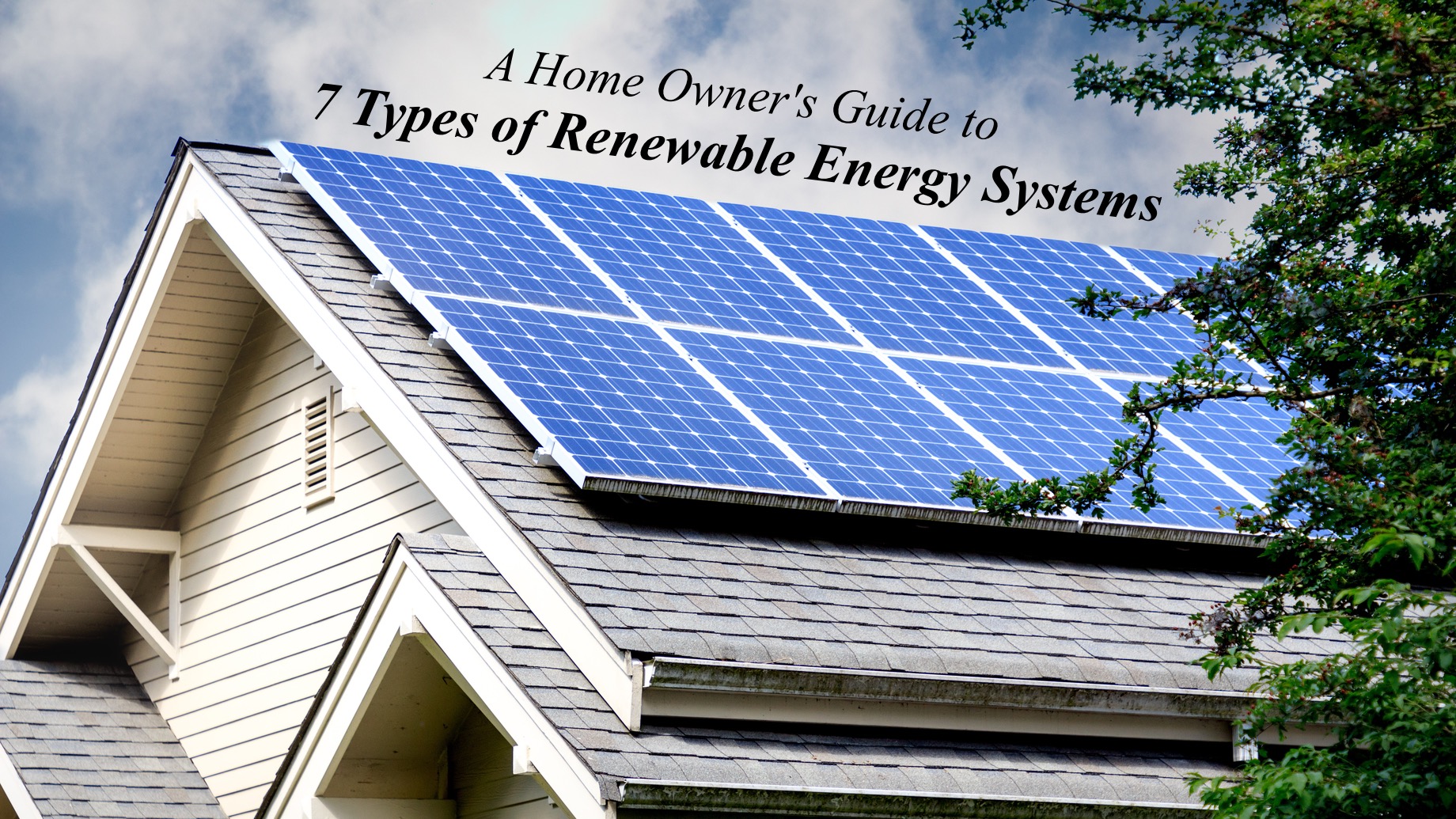
Climate change continues to be one of the most pressing threats our planet faces.
While large-scale action is required to halt the negative effects of climate change, there are actions that individuals can take to mitigate their own impact (and save money in the process).
The International Renewable Energy Agency has determined that up to 90% of the necessary reduction of energy-related emissions can be achieved by using renewable energy systems and improving their efficiency.
As a homeowner, there are a number of avenues you can pursue to implement forms of renewable energy for your home. Read on for a list of seven types of commercially-available home renewable energy systems.
Types of Renewable Energy Systems
1. Solar Panels
Photovoltaic panels are what most people think of first when renewable energy sources come up. These panels can be mounted on your roof to generate electricity for your home whenever the sun is shining.
Solar panels have become more efficient and less expensive over the years. To learn about the cost of installation and the possible savings from switching to solar, check out your local solar companies.
2. Wind Turbines
The other big hitter in renewable energy sources is wind. You’re probably familiar with the large turbines seen in vast wind farms, but you might not know that they come in a wide variety of sizes and can be used residentially.
Smaller turbines can be installed on your property if you’ve got a bit of extra space. They can also be connected to the grid to mitigate rather than entirely provide your home’s energy needs.
3. Rechargeable Batteries
While rechargeable batteries are not sources of energy in themselves, they can integrate into home renewable energy systems to make the most of the renewable energy you produce.
These large batteries are able to store significant amounts of energy to use when your sun or wind source isn’t producing.
4. Solar Water Heater
If you’re not prepared to go fully solar, you can utilize solar power for specific household uses. These can considerably mitigate your energy cost and consumption.
One example of these sorts of systems is a solar water heater. These heaters use solar power to heat your hot water reserve, saving your grid power for other uses.
5. Solar Air Conditioning
Another example of a residential renewable energy system utilizing solar power to reduce your grid power consumption is a solar air conditioner.
These work the same way as solar water heaters but use the energy for air conditioning. As this is one of the greatest energy hogs of conventional homes, these systems can ease your consumption considerably.
6. Hydroelectric Power
This option is much less common in residential areas, but if your property contains a source of water, a hydroelectric turbine can significantly reduce your grid power consumption.
One of the major benefits of hydropower is that water sources tend to maintain a consistent flow, meaning that you can count on steady energy input. If this might be an option for you, it can be a very cost-efficient option.
7. Geothermal Energy
Heat trapped below the Earth’s surface can be harnessed for energy. Underground temperatures are reasonably consistent across the US, so this can be an option no matter where you live.
An Eye Toward the Future
Investing in home renewable energy systems is one highly impactful action you can take to minimize your carbon footprint. On top of this, it can start saving you money right away!
If you found this post informative, be sure to check out the articles section of the site for more!